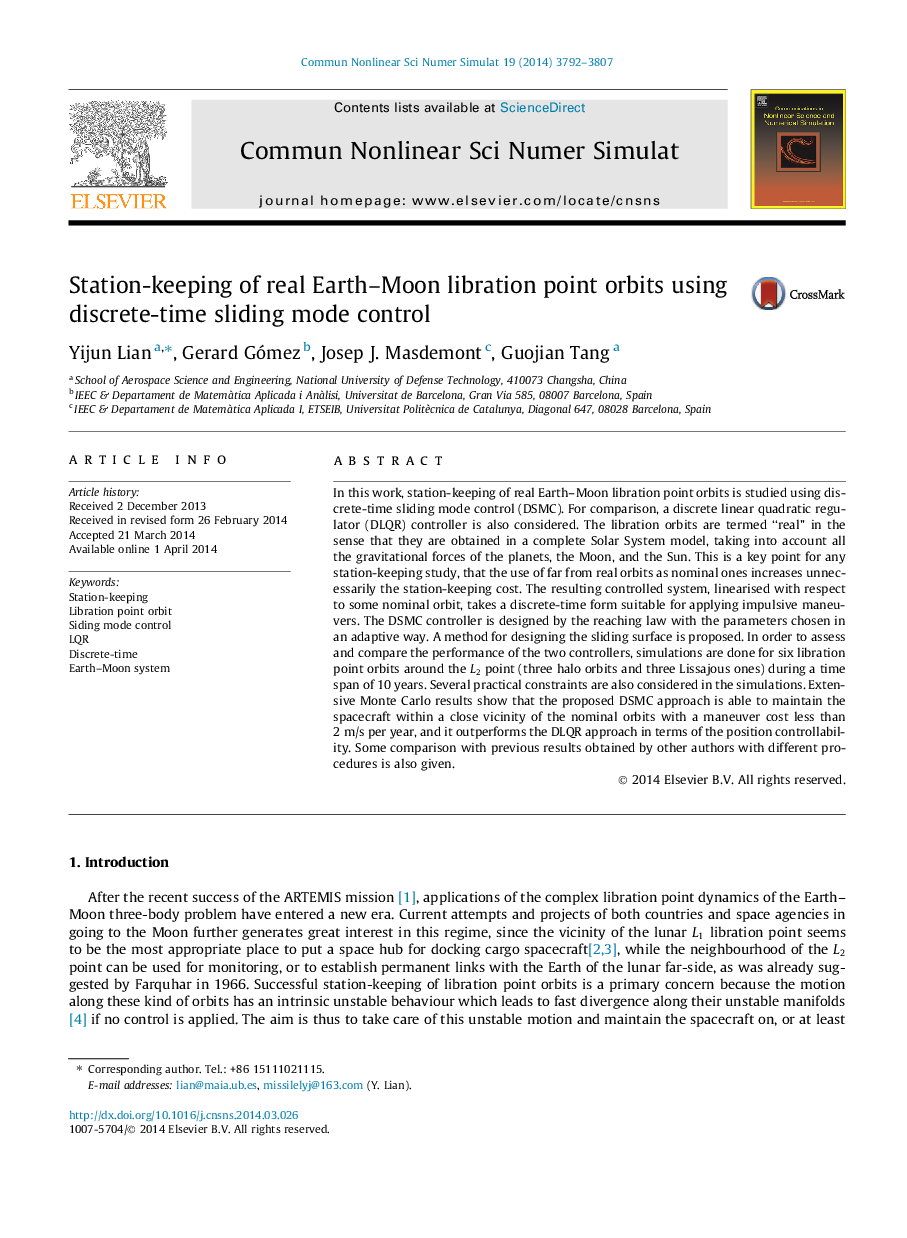| Article ID | Journal | Published Year | Pages | File Type |
|---|---|---|---|---|
| 758895 | Communications in Nonlinear Science and Numerical Simulation | 2014 | 16 Pages |
•Compared with DLQR approach, the parameter tuning of DSMC is easier.•DLQR has the risk of inserting s/c into unstable manifold of the nominal orbit.•The average position deviation under DSMC control is less than 20 km.•The stationkeeping cost is around 1.6 m/s per year in the Earth–Moon system.•Velocity tracking error plays an essential role in control performance.
In this work, station-keeping of real Earth–Moon libration point orbits is studied using discrete-time sliding mode control (DSMC). For comparison, a discrete linear quadratic regulator (DLQR) controller is also considered. The libration orbits are termed “real” in the sense that they are obtained in a complete Solar System model, taking into account all the gravitational forces of the planets, the Moon, and the Sun. This is a key point for any station-keeping study, that the use of far from real orbits as nominal ones increases unnecessarily the station-keeping cost. The resulting controlled system, linearised with respect to some nominal orbit, takes a discrete-time form suitable for applying impulsive maneuvers. The DSMC controller is designed by the reaching law with the parameters chosen in an adaptive way. A method for designing the sliding surface is proposed. In order to assess and compare the performance of the two controllers, simulations are done for six libration point orbits around the L2L2 point (three halo orbits and three Lissajous ones) during a time span of 10 years. Several practical constraints are also considered in the simulations. Extensive Monte Carlo results show that the proposed DSMC approach is able to maintain the spacecraft within a close vicinity of the nominal orbits with a maneuver cost less than 2 m/s per year, and it outperforms the DLQR approach in terms of the position controllability. Some comparison with previous results obtained by other authors with different procedures is also given.
